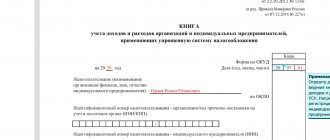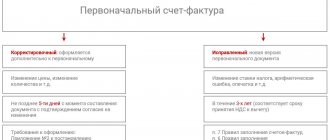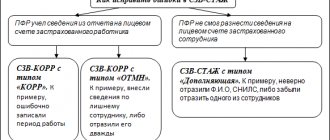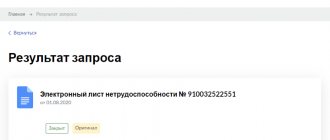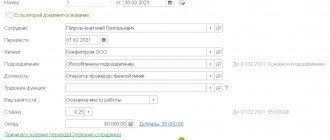Error correction scheme
The period in which an error must be corrected depends on its significance and when it was discovered.
There are three situations:
- before signing the reports;
- after signing the reporting, but before its approval;
- after signing and approval of the reports.
If an error was found before the reporting was signed, it should be corrected by the date December 31 of the reporting year. Moreover, regardless of whether this error is significant or not (clauses 6, 7, 8 PBU 22/2010).
If an error is discovered after signing, but before the statements are approved, then:
- a minor error must be corrected in the month of discovery. Account 91 “Other income and expenses” is adjusted (clause 14 of PBU 22/2010);
- a significant error is corrected as of December 31 of the reporting year (clauses 6, 7, 8 of PBU 22/2010).
If an insignificant error is discovered after signing and approval, then it is corrected with the current date.
A significant error found after signing and approval of the statements must also be corrected on the day of discovery, but at the same time account 84 “Retained earnings (uncovered loss)” is adjusted. And erroneous indicators need to be recalculated as if there was no error. Explanations are drawn up on the financial statements about the nature of the error and the correction period (subclause 2, clause 9 of PBU 22/2010).
The company determines the criteria by which an error is considered significant. This must be stated in the accounting policy (clause 3 of PBU 22/2010). They can be both qualitative and quantitative.
Accounting for significant costs of repairing fixed assets of RSO
08.09.2021
The resource supplying organization at OSNO has been applying FAS 6/2020 “Fixed Assets” and FAS 26/2020 “Capital Investments” from 01/01/2021. According to clause 10 of FSBU 6/2020, independent inventory items also recognize the significant costs of an organization for repairs, technical inspection, and maintenance of fixed assets, with a frequency of more than 12 months or more than the usual operating cycle exceeding 12 months. These objects are depreciated in accounting. Does RSO have the right in accounting for the cost of a major overhaul, if the amount of costs is significant, to increase the initial cost of a repaired fixed asset item without identifying these costs as an independent fixed asset item? How are significant costs incurred in connection with capital repairs of fixed assets taken into account by RSO when calculating income tax? Are there any differences between accounting and tax accounting?
Accounting
OS repair - capital investment
In accordance with clause 5 of FSBU 26/2020
in accounting, an organization's expenses for the acquisition, creation, improvement and (or) restoration of fixed assets are recognized as capital investments. Capital investments include, in particular, costs for improving and (or) restoring an asset (for example, completion, additional equipment, modernization, reconstruction, replacement of parts, repairs, technical inspections, maintenance).
Capital investments are recognized in accounting if the following conditions are simultaneously met, listed in clause 6 of FAS 26/2020
:
– the costs incurred will ensure that the commercial organization receives future economic benefits for a period of more than 12 months or a normal operating cycle of more than 12 months; – the amount of costs incurred or an amount equivalent to it is determined.
Capital investments are recognized in accounting if the specified conditions are met, regardless of whether they were made during the initial acquisition, creation of fixed assets or during their subsequent improvement and (or) restoration.
The amount of actual costs when recognizing capital investments includes, among other things, costs for maintaining the operability or serviceability of assets used in making capital investments, routine repairs of these assets ( clause “g” clause 10 of FAS 26/2020
).
Based on clause 16 of FSBU 26/2020
capital investments do not include:
– costs for maintaining the operability or serviceability of the OS, their current repair (except for the case specified in paragraph “d”, paragraph 10
standard) (
paragraph “b”
);
– costs for unscheduled repairs of fixed assets caused by breakdowns, accidents, defects, improper operation, to the extent that such repairs restore the standard performance indicators of fixed assets, including useful life, but do not improve or extend them ( paragraphs "V"
).
Capital investments upon their completion, that is, after bringing the object of capital investments to a state and location in which it is suitable for use for the planned purposes, are considered fixed assets ( clause 18 of FSBU 26/2020
).
OS recognition
By virtue of clause 24 of FSBU 6/2020
the initial cost of a fixed asset item increases by the amount of capital investments associated with the improvement and (or) restoration of this object at the time of completion of such capital investments.
At the same time, according to the norm of clause 10 of FSBU 6/2020
The unit of accounting for fixed assets is an inventory item. An inventory item of fixed assets is recognized as:
– or OS object with all devices and accessories; – or a separate structurally isolated object intended to perform certain independent functions; - or a separate complex of structurally articulated objects that constitute a single whole and are intended to perform a specific job.
If one asset has several parts, the cost and useful life of which differ significantly from the cost and technical information of the object as a whole, each such part is recognized as an independent inventory item. Independent inventory items are also recognized as the significant costs of the organization for repairs, technical inspection, and maintenance of fixed assets with a frequency of more than 12 months or more than the usual operating cycle exceeding 12 months.
The organization independently sets the criterion for determining the significance of the amount of costs when carrying out repairs, technical inspection, and maintenance of fixed assets in its accounting policies.
Specialists of the Foundation "NRBU "BMC" in Recommendation R-51/2014 OK MASH "Costs for major repairs of fixed assets", adopted on August 19, 2014, indicated that the level of materiality can be established:
– as a percentage of the cost of major repairs to the original cost of the fixed asset being repaired; – as a percentage of the cost of major repairs to the initial or residual (book) value of the corresponding group of fixed assets; – in the form of a cost criterion determined for a homogeneous group of fixed assets.
Conclusion
We believe that if, at the time of completion of a major overhaul of a fixed asset (the costs of which are significant), the period between repairs does not differ significantly from the remaining useful life of the repaired asset, then the initial cost of this object can be increased by the repair costs.
If the remaining useful life of the repaired asset and the period between repairs differ significantly, then an independent asset should be reflected in the accounting records, the initial cost of which will be the cost of major repairs. The SPI of such an object can be set equal to the overhaul period (see also Recommendations for audit organizations, individual auditors, auditors for conducting an audit of the annual financial statements of organizations for 2012
, given as an appendix to
the Letter of the Ministry of Finance of the Russian Federation dated 01/09/2013 No. 07-02-18/01
).
Income tax
According to paragraph 2 of Art. 257 Tax Code of the Russian Federation
For profit tax purposes, the initial cost of fixed assets changes in cases of completion, additional equipment, reconstruction, modernization, technical re-equipment, partial liquidation of relevant facilities and on other similar grounds.
Costs for the repair of fixed assets and other property made by the income tax payer are considered as other expenses and are recognized for tax purposes in the reporting (tax) period in which they were incurred, in the amount of actual costs (clause 1 of Article 260 of the Tax Code RF
).
Clause 1 of Art. 324 Tax Code of the Russian Federation
In analytical accounting, the taxpayer forms the amount of expenses for the repair of fixed assets, taking into account:
1) grouping of all expenses incurred, including:
– cost of spare parts and consumables used for repairs; – expenses for remuneration of workers carrying out repairs; – other expenses associated with carrying out the specified repairs on our own;
2) costs of paying for work performed by third parties.
It turns out that the costs arising in connection with the repair of fixed assets include, among other things, the cost of spare parts.
When applying the accrual method, costs for repairs of fixed assets are recognized as expenses in the reporting period in which they were incurred, regardless of their payment, taking into account the features provided for in Art. 260 Tax Code of the Russian Federation
(
clause 5 art. 272 Tax Code of the Russian Federation
).
Costs for the repair of fixed assets are, as a rule, indirect expenses, therefore they are fully included in the expenses of the current reporting (tax) period ( Article 318 of the Tax Code of the Russian Federation
,
Letter of the Ministry of Finance of the Russian Federation dated May 4, 2012 No. 03-03-06/1/223
).
In accordance with paragraph 3 of Art. 260 Tax Code of the Russian Federation
To ensure, over two tax periods, and a more even inclusion of expenses for repairs of fixed assets, taxpayers have the right to create reserves for upcoming repairs of fixed assets in the manner established by
Art.
324 Tax Code of the Russian Federation .
For your information:
the possibility of creating reserves for upcoming repairs of fixed assets is not an obligation, but a right of the organization.
The taxpayer independently determines in the accounting policy the method of accounting for profit tax purposes for expenses for the repair of fixed assets ( Letter of the Ministry of Finance of the Russian Federation dated October 19, 2012 No. 03-03-06/4/104
).
Thus, for profit tax purposes, the procedure for accounting for expenses for the repair of fixed assets differs from the procedure for accounting for expenses for the completion, retrofitting, reconstruction, modernization and technical re-equipment of fixed assets, which increase the initial cost of the fixed asset and are subject to write-off for tax purposes through the depreciation mechanism in accordance with Art. 256 – 259.3 Tax Code of the Russian Federation
.
Officials emphasize: attributing the organization's expenses to expenses for repairs or reconstruction, modernization, technical re-equipment must be carried out in accordance with the norms of the Tax Code (see letters of the Federal Tax Service of the Russian Federation dated February 12, 2021 No. SD-4-3/1777
,
Ministry of Finance of the Russian Federation dated June 27, 2018 No. 03-03-06/1/44329
,
dated October 6, 2017 No. 03-03-06/1/65431
).
So, the costs of repairing fixed assets (including the costs of major repairs - Letter of the Ministry of Finance of the Russian Federation dated September 4, 2018 No. 03-03-06/1/63046
) are taken into account for profit tax purposes in accordance with
Art.
260 Tax Code of the Russian Federation .
If an organization does not create a reserve in tax accounting for upcoming repairs of fixed assets, costs incurred in connection with repairs of fixed assets, including capital ones, are included in other expenses in the period of their implementation (if the accrual method is used). For example, expenses in the form of the cost of spare parts used in OS repairs are recognized for profit tax purposes as they are released for repairs ( Letter of the Federal Tax Service of the Russian Federation dated April 2, 2018 No. SD-4-3/
[email protected] ). The fact that the costs of major repairs of operating systems may be significant does not change the established procedure for their accounting for profit tax purposes.
At the same time, it is important not to confuse the overhaul of operating systems with their reconstruction, modernization, technical re-equipment - from the point of view of taxation (as well as accounting), the correct classification of the work performed is important.
In paragraph 2 of Art. 257 Tax Code of the Russian Federation
The following concepts are given.
| Term | Definition |
| Work on completion, retrofitting, modernization | Work caused by a change in the technological or service purpose of equipment, a building, structure or other object of depreciable fixed assets, increased loads and (or) other new qualities |
| Reconstruction | Reconstruction of existing fixed assets associated with improving production and increasing its technical and economic indicators and carried out under the OS reconstruction project in order to increase production capacity, improve quality and change the range of products |
| Technical re-equipment | A set of measures to improve the technical and economic indicators of fixed assets or their individual parts based on the introduction of advanced equipment and technology, mechanization and automation of production, modernization and replacement of obsolete and physically worn out equipment with new, more productive ones |
Differences between accounting and tax accounting
The inclusion of costs for major repairs of fixed assets at a time at the time of their implementation as part of taxable expenses when calculating income tax and their reflection in accounting as part of capital investments with recognition as an asset means that tax and accounting data diverge. This discrepancy leads to the emergence of a taxable temporary difference in accounting and, as a consequence, a deferred tax liability (DTL) (Debit 68 (99) Credit 77). As depreciation accrues in accounting, IT will be written off (Debit 77 Credit 68 (99)).
Let us remind you: as of the reporting date, the difference between the book value of an asset or liability and its value accepted for profit tax purposes is a temporary difference ( clause 8 of PBU 18/02 “Accounting for corporate income tax calculations”
).
Taxable temporary differences lead to the formation of deferred income tax, which should increase the amount of income tax payable to the budget in the next reporting period or in subsequent reporting periods ( clause 11 of PBU 18/02
).
According to clause 15
of this document, deferred tax liability is understood as that part of the deferred income tax that should lead to an increase in income tax payable to the budget in the next reporting period or in subsequent reporting periods. Deferred tax liabilities are recognized in the reporting period in which taxable temporary differences arise.
* * *
We believe that in accounting it is possible to increase the initial cost of a repaired asset by the amount of costs for a major overhaul (when their value is significant), if the period between repairs does not differ significantly from the remaining SPI of the repaired asset. If the remaining useful life of the repaired asset and the period between repairs differ significantly, then an independent asset should be recognized in accounting, the initial cost of which will be the cost of major repairs.
If RSO, for profit tax purposes, does not create a reserve for upcoming repairs of fixed assets, expenses incurred in connection with repairs of fixed assets, including capital ones, are included in other expenses in the period of their implementation (if the accrual method is used).
Differences in accounting data (recognition of fixed assets) and tax accounting (recognition of expenses) lead to the emergence of a taxable temporary difference in the accounting records of RSO and, as a consequence, a deferred tax liability (Debit 68 (99) Credit 77).
Karavaikina E. E., expert of the information and reference system “Ayudar Info”
Send to a friend
Quantitative criterion of materiality
In a quantitative assessment, an error is considered significant if it exceeds a certain value that can be expressed:
- in a fixed amount;
- as a percentage of the amount for the reporting item.
Using a fixed amount is not entirely convenient, since it will have to be revised whenever the company’s business volumes change. Therefore, the assessment of materiality as a percentage is more often used.
And the most prudent use a combined option. In this case, when any of the criteria is achieved, the error is considered significant.
Example. Combined option of establishing the criterion for the materiality of an error The company decided to use a combined option of recognizing the error as significant. Its accounting policy states that an error is considered significant if any of two conditions are met:
- credentials are distorted by more than RUB 50,000;
- the magnitude of the error is 5% or more of the amount reflected in the financial statements.
Procedure for applying the materiality level
To apply the level of materiality when preparing financial statements, you will need to go through 4 steps:
- Select information that may be essential for users based on all the facts of economic life for the reporting period.
- Determine the level of materiality of information based on quantitative and qualitative factors, as well as the degree of disclosure of important details.
- Distribute the information received so that it clearly reflects the financial position of the company, its financial results and cash flows.
- Check the reporting from the user's point of view, i.e. whether the information that the user needs to make a decision is disclosed.
Such a plan will help you think through the disclosure of information in your reporting as much as possible and avoid mistakes.
Information about significant errors
In the explanatory note to the annual financial statements, the organization is required to disclose the following information regarding significant errors of previous reporting periods corrected in the reporting period:
- nature of the error;
- the amount of adjustment for each item in the financial statements - for each previous reporting period to the extent practicable;
- the amount of adjustment based on data on basic and diluted earnings (loss) per share (if the organization is required to disclose information on earnings per share);
- the amount of adjustment to the opening balance of the earliest reporting period presented (clause 15 of PBU 22/2010).
If it is impossible to determine the impact of a significant error on one or more previous reporting periods presented in the financial statements, then the explanatory note to the annual financial statements discloses the reasons for this, and also provides a description of the method of reflecting the correction of the significant error in the financial statements of the organization and indicates the period starting from which has been corrected (clause 16 of PBU 22/2010).
Hello Guest! Offer from "Clerk"
Online professional retraining “Accountant on the simplified tax system” with a diploma for 250 academic hours . Learn everything new to avoid mistakes. Online training for 2 months, the stream starts on March 1.
Sign up

